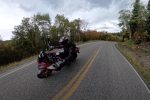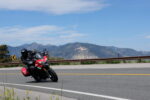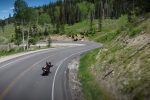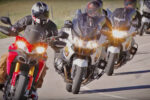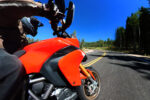When I was a newer rider, I was so excited about going on rides with large groups of motorcycles. The thought of journeying to a predetermined destination with a collective of motorcycles was so cool. A show of motorcycling force! For whatever reason, motorcyclists like to congregate, talk bikes and go for rides. Over the years and after several really bad group riding experiences, I’d sworn off riding in large groups forever, but that’s not a very realistic goal. If you are even remotely social you will find your self in various size groups from time to time. Plus, if you ever take advantage of an overseas group tour, you may be thrown in with riders you’ve never met.
In 2010, we all flooded a large tour group, MotoCaribe. During the years they’d been in operation, they rarely had four or five bikes at any one time. Now here we were, twelve bikes. We were suddenly the biggest thing on the road and none of us knew where we were going and all of us were depending on the leader to get us across the small Caribbean nation.
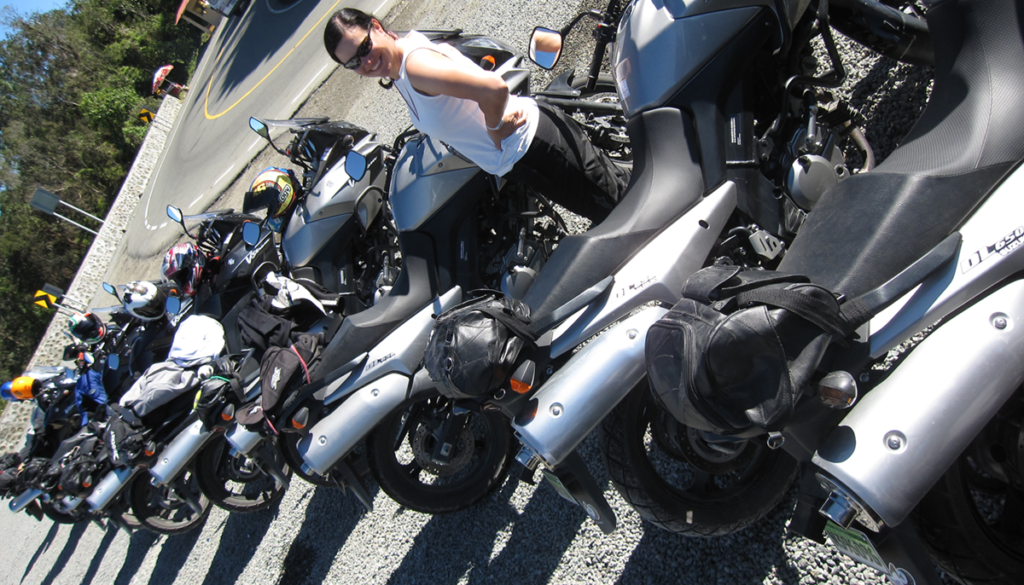
So, what is one to do? How do you keep things fun and safe when you find yourself in with a group of riders?
The fine folks who run group rides for a living have discovered that an unusually high number of crashes occur when the number of riders in a group exceeds three bikes. The thinking is that a rider can’t see more than three bikes ahead anyway. If Rider-Number-One jams the brakes or swerves, riders Two and Three can clearly see Rider-One and react appropriately, but Rider-Four’s (and farther back) view is likely blocked by one of the riders in front of them. They’ve also learned that the larger the group, the more competitive it becomes. Slower riders will feel pressure to keep up with faster riders.
Squadrons
It is wisest to break one large group, of say twenty bikes, into five or six smaller groups; squadrons if you will; we’ll use that term because “squadron” sounds cool. Breaking it down has lots of additional benefits. Groups of about three riders can more easily keep track of each other in the event of a separation or break-down. One rider trying to keep twenty bikes together is like herding those proverbial cats. It can be done, but the ride-leader will likely put an inappropriate amount of attention on their mirrors, counting headlights and keeping track of everyone, when it’s best to be looking ahead.
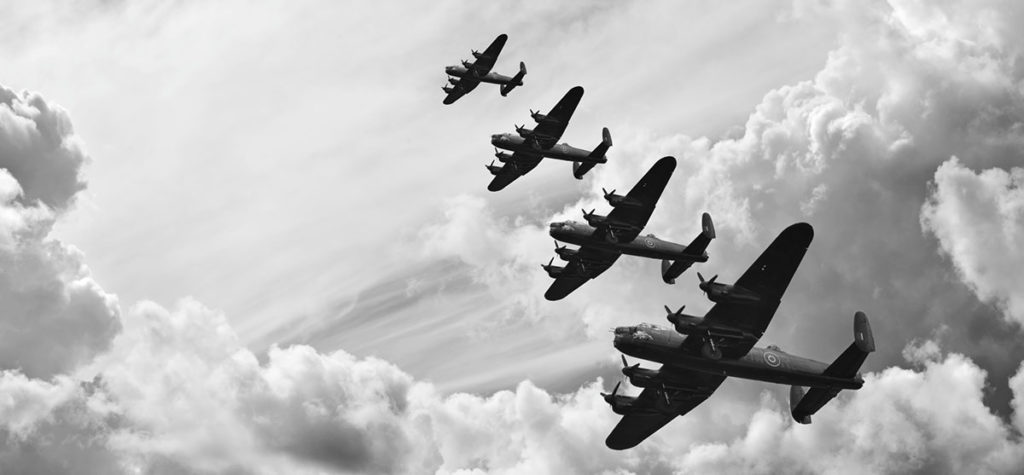
In order for this to work, the smaller groups (squadrons) need to know that they are going to be responsible for each other. Once the smaller group is established that squadron will likely conform to each others riding. As familiarity increases, enjoyment of riding with their squadron increases. There is a reason why fighter pilots stick to smaller “squadrons” instead of huge flying armadas.
Communication
It’s a good idea for the smaller groups to have a quick chat before heading off. I like rotating the point man, but some pilots – err, riders like to be in the lead all the time and some riders are delighted and content to hang back and simply follow or “ride sweep”. Find your niche. Smaller groups, typically find their own pace relatively quickly, which adds to squadron cohesion. Its also a good time to discuss maybe a few hand signals, such as “I need gas” – pointing to the tank, “go ahead” – waving your hand to allow the rider behind you to get in front of you and, most importantly, “COP!” – patting the top of your helmet. You can add new signals as needed.
We think that spouses should always stick together. A few years ago we went on a ride where the male counterpart wanted to ride fast with the guys and left his brand-new-rider wife behind in the dust. This created an extreme amount of tension between the couple that overflowed to the rest of the group and affected the entire weekend. Additionally, I get grumpy when I can’t ride with my wife. I’d rather ride with her than anybody else…
Group Think
When passing other members in the group, try to avoid slipping past them in their lane. This can startle them and cause conflict if there is an unexpected hazard that must be dealt with. Pass members of your group the same way you’d pass a car. Go into the other lane and give them room. Same goes if you are at the point and are passed by a rider from another squadron. There may be a reason such as an unexpected turn coming up or a change in plans. Openly allowing riders to pass each other without issue and allowing another rider to take the lead if they have an urgent need to stop, for whatever reason; be it a great photo opportunity, a bike problem or a desperate need to pee is to everyone’s benefit.
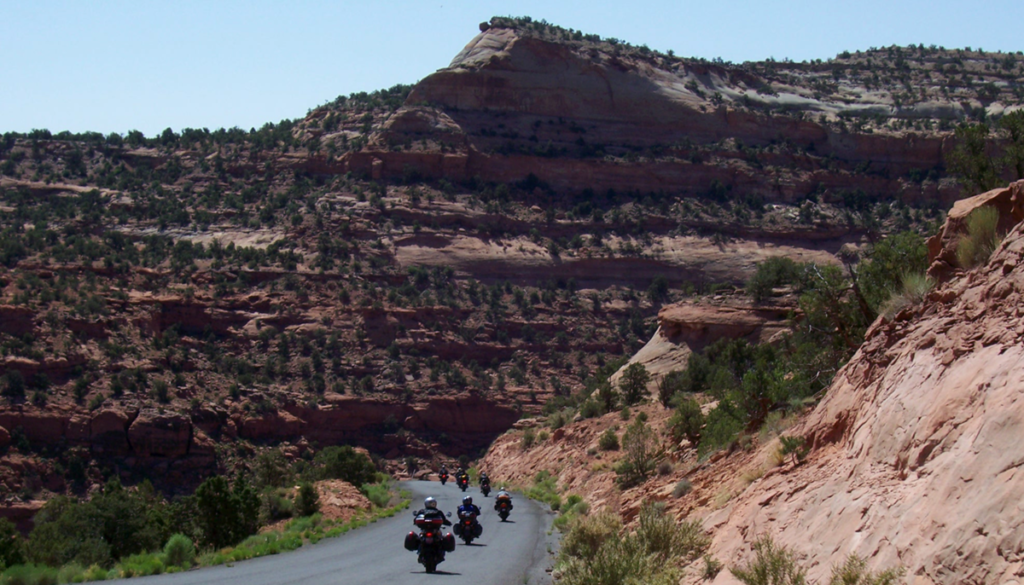
Also, try not to ride side-by-side. Even though Ponch and Jon made side-by-side riding the coolest motorcycling technique of the ’70s, it is not a very safe practice. It is better to ride in single-file. Stagger when you are forced to endure straight sections, but in the twisties, everybody gets the full width of their lane and their own path of travel around the bends. Some riders will refer to the staggered position as “lane discipline” and may expect riders to stay on their half of the lane, even through canyons. I really dislike this concept. Ignore “lane discipline” and use your entire lane unless you happen to be riding in a parade.
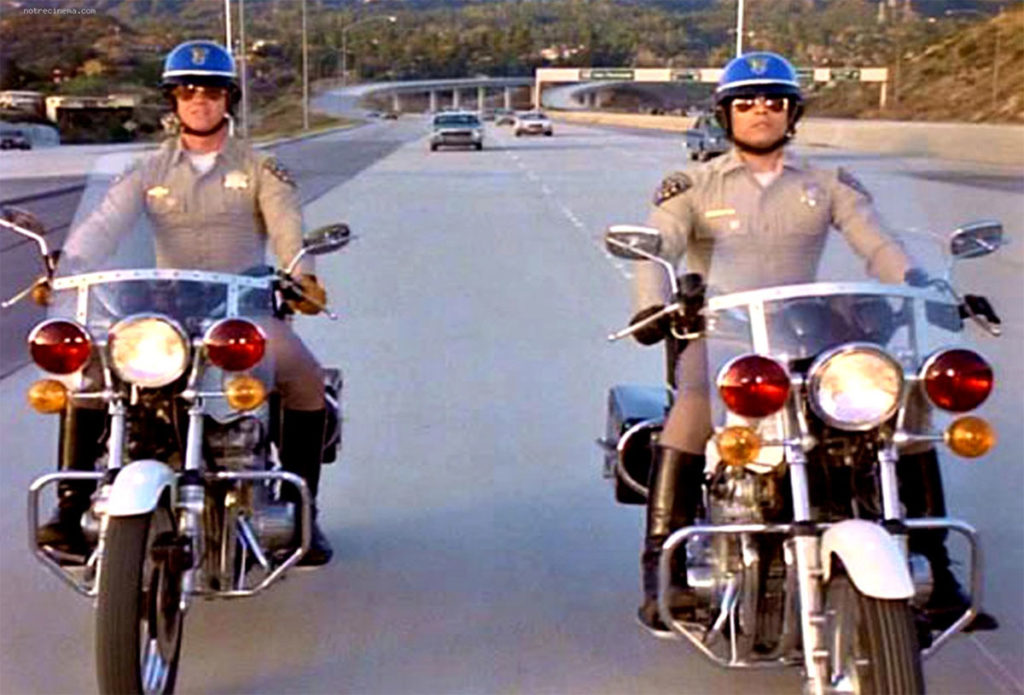
Keep a moderate following distance as well. Particularly important as forward velocities increase. Two-seconds may be adequate in many cases, but even riding with those whom I ride the most, I’m most comfortable as much as ten or more seconds behind. This also has the added benefit of keep the finish on the front of your motorcycle free from uncessary rock chips.
When big groups start riding together, an inch-worm effect starts to happen. Riders will bunch together, then spread apart as speeds fluctuate and the poor rider at the back may go from using the brakes to avoid running into the rider in front of them to spinning the speedo up to triple digits to keep up, just to go back to the brakes again; all while the lead rider cruises along at a sedate, steady pace. Smaller groups, again, prevent this anomaly from happening. Smaller groups can change speed, direction and avoid hazards quite efficiently.
Guidelines more than Rules
Before heading out at the start of the day, it’s a good idea to set a few ground rules and share information. The easiest way to do this is with daily maps of the route – although this dampens the potential for spontaneous route changes many motorcyclist love. The daily route should have suggested stop points where smaller groups can rally back with the whole. A known destination for the evening is a great way to avoid problems throughout the day and give smaller groups the freedom to do their own thing or choose a different shorter or longer route if they so choose. Additionally, in the event that a squadron runs into problems, they at least know where everybody is going to be at the end of the day.
Be predictable. Think before you make any moves. Look behind you and to the sides before turning off or making any direction changes. Signal, make slow movements. Nothing can upset the flow of the group than lots of unpredictable movements by one squadron member. Another great ground rule to make sure everybody is on their own when passing other vehicles. Never pass a car just because the squadron leader passes.
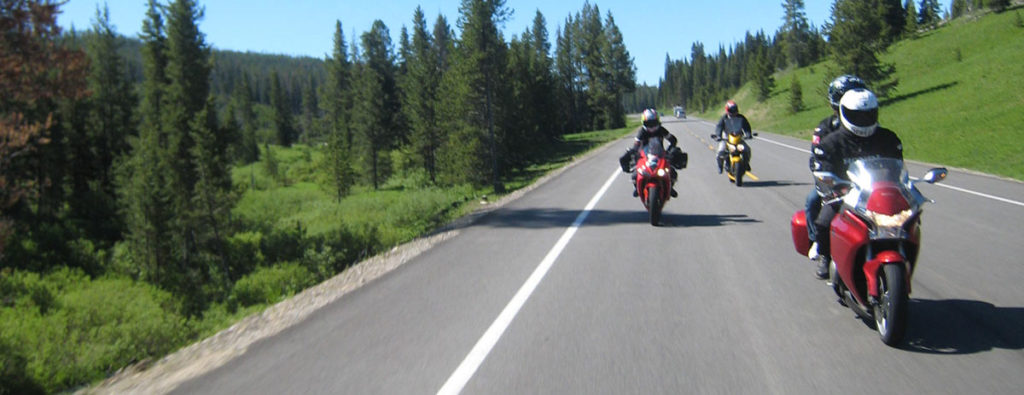
Of course, all the information here is mere suggestions, you’ll likely need to make adjustments depending on the size of the group, the length of the ride and the various skill levels of the group. It’s hard to break one huge group of 20 bikes into five or six smaller groups, but it’s the most critical component of a safe and fun group ride. Not only does it improve safety, but it also draws a helluva lot less attention from the local constabulary force. The sporadic passing of a handful of small groups may not even get a second thought but an armada of performance bikes trailing through town could prompt a radio warning to other officers to “be on the lookout”.
In any case, the key to riding with lots of other riders is good communication at the beginning of the ride. Understanding everyone’s expectations is critical. Now is not the time to be polite. When a small group is formed, and there is no communication, only the front rider will be riding the pace they want, everybody behind will be going faster than they feel comfortable or going slower than they want. Find out what everyone’s expectations are and adjust accordingly.
Ultimately, every rider is responsible for themselves. It is unfair to expect everybody to ride at your pace or to sacrifice a great road to keep the group together. Distance between riders is fine, as long as everybody understands the expectation that groups can and will split up. And as long as everybody rallies up, in the end, it’s all good. Besides, you can’t chat and discuss things while riding anyway. The ultimate rule is to ride your own road, go your own pace and don’t be suckered into going faster than you feel comfortable because everybody else is going fast. Getting there first is optional, getting home is mandatory.
